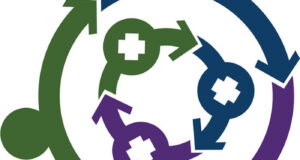
Patient Advocates: A Crucial Piece of the Elder Care Puzzle
As case managers, we are all too aware of the myriad problems with our current healthcare system. One of the most intractable issues, particularly for elders, involves “frequent flyers,” patients who are admitted to the ED or hospital on a revolving basis. Despite the implementation of telephone-based follow-ups and other forms of tracking, this problem has not budged.
This issue is compounded by the reactive model of emergency and response our system is based on. Fee-for-service payment and the devaluation of public health measures encourage responses to healthcare problems only after they have occurred. For any preventive measures, this system generally makes patients responsible through recommending largely ineffective lifestyle changes.
People, particularly elders, often get sicker until a catastrophic event occurs, after which their families and medical staff bring in all their resources. Those resources usually address the immediate catastrophe but do not create conditions that support health maintenance afterward.
So what can we do to address the problem of frequent flyers? One answer: a care and advocacy model developed by Diane Halloran, RN, MPH, the founder and CEO of Everybody Needs A Nurse Patient Advocates in Chapel Hill, North Carolina. Her model supplies a proactive means of maintaining health for elders, while supporting their families as they navigate the healthcare system. In 2017, Diane developed a system of caring for elders based on the nursing model pioneered by Virginia Henderson and others (references 1,2). This system treats clients in a positive, affirming way, while helping them toward their health goals.
This system has had notable success in preventing the recurrence of health emergencies, allowing peaceful last years of life for elders and their families.
Diane bases her system on providing care continuity over extended periods of time—months and years. Her system assigns each client a single registered nurse who serves as the point person for questions and issues that arise.
At Everybody Needs A Nurse Patient Advocates, our nurses can and often do share resources and ideas with one another, but ultimate responsibility rests with a single person, creating a unified experience for the client.
The nurse sees clients weekly from their admission with us until their death, move to hospice or enrollment in memory care. These weekly visits build very strong relationships with clients and their families over time. We focus on developing trust and consistency throughout the changes that come with aging.
Clients trust their nurses to speak their truth to them in a supportive way. They understand we have their best interest at heart in the face of a fragmented, difficult-to-navigate healthcare and eldercare system.
The service is built on three pillars:
Weekly home visits, which enable us to monitor and assess clients’ environments, social dynamics and medical treatments. Over the months and years, our continued presence also allows us to build trust and get to know and understand the client. This visit also includes medication management and assessment of side effects, preventing accidental overdoses and ensuring medication effectiveness.
Visits to doctors, where our nurse accompanies the client to the doctor, making sure each physician is familiar with the advocate. We encourage our clients to take the lead during doctor visits for as long as they are able. But our RN is present to prompt any forgotten topics and to take notes. We prepare our clients for the appointment in the previous home visit, helping them create a list of questions and concerns and then debrief during the next home visit, helping them implement the doctor’s suggestions and prescriptions.
Communication, the third crucial pillar. After every visit, the nurse sends a Family Report to family, providers and/or the client themselves. This report contains our observations of not only the medical situation but also the client’s appearance, mood and other intangibles. Receiving a weekly report allows the family to trust us to be their “eyes and ears” on their loved one.
CASE STUDY: ELOISE∗—INITIAL ENCOUNTER
We got a call from Eloise’s daughter. Her 87-year-old mother had fallen and broken her hip. She was currently in rehab after surgery. She was almost ready to be released when she began experiencing hallucinations caused by an advanced UTI. Eloise lived alone at home. She was adamant about not leaving her home, where she had raised her children and lived with her husband until his death.
The response to Eloise’s predicament typified our response-based healthcare system. After her fall, the family was called in from different areas of the country. Eloise had immediate surgery to repair her hip, and a good post-op rehab facility had admitted her and given her physical therapy.
However, there was no long-term strategy for once she returned home, other than to wait for the next catastrophe. And, crucially, no one investigated WHY she fell. Although the rehab facility caught her UTI and placed her on an antibiotic, no specific follow-up was planned once she was home.
Eloise’s nurse did an initial assessment in the rehab facility and started weekly home visits. She brought in a home care agency we knew and worked with the aides to make sure she was drinking enough to avoid a future UTI. We also reconciled her medications to ensure the new meds she had at the hospital and rehab did not conflict with the medications she had already been taking.
ELOISE M.—YEAR ONE
After the initial encounter with Eloise, we began our weekly visits. Over the first year, we started to develop a relationship with her. We met her children when they came into town, and we began going to see her doctors with her.
We heard her stories about her life as a child and young adult. About her career and child-raising. Her nurse shared some of her own stories, creating a bond.
We noticed that Eloise had a predisposition for UTIs, even when she was fully hydrated. We arranged with her GP to have a standing order for an antibiotic, and we educated her home care aides to identify her symptoms. They then called us and went over the symptoms, and we could call in the prescription, avoiding multiple visits to urgent care.
ELOISE M.—YEAR TWO
Over this year, we continued our weekly visits, deepening the relationship with Eloise and her family. After several months, her UTIs were under much better control and her medication issues were worked out.
At this point, the family inquired about whether we would continue to visit weekly, since she was so much better. But we understood that things change quickly for elders and wanted to maintain the trusting relationship we had built. Eloise really enjoyed her nurse visits, so we all agreed to keep on the weekly schedule.
It was good that we did, because over this year, we noticed that Eloise was repeating her stories more frequently and seemed to be losing some of her short-term memory.
ELOISE M.—YEAR THREE/YEAR FOUR
These years were transitional for Eloise, as she began to suffer from increasing dementia. Her nurse became one constant in an ever-changing world for her. During this time, she remained very focused on staying in her home. We provided ongoing support to allow her to stay in place:
- We listened to her deep sadness over “losing her mind” and consoled her based on her own belief system, which we knew about from our years of talking to her.
- We talked to her about her anger at her children, who she felt wanted to take away her independence.
- We brought a medication box with a timer to remind her to take her medications in a timely manner and transitioned to managing her medications completely.
- We reminded her of her childhood and young adult stories and refocused her on her beloved family.
- We accompanied her to doctors, prompting her questions and letting the doctor know about the situation at home.
- We arranged for a driving test, so that she would have evidence that she could no longer safely drive, helped the family sell her car and talked with her extensively and in a supportive manner about why she needed to make this transition.
There were many times in this period when Eloise was understandably very upset with her situation. Her nurse was a lifeline, listening to her concerns, providing solutions when possible and redirecting her when necessary. All of this care stemmed from a long-term, ongoing relationship. Anyone coming into the situation at this point would lack the background and understanding to create buy-in with these changes.
ELOISE M.—YEAR FIVE
During our fifth year seeing Eloise every week, her challenges increased. She still insisted on living in her home and did not want any changes, even as her memory declined sharply.
We needed to offer creative solutions, and work with her increasing sense of losing control. Because we were trusted and recognized—when many others weren’t—we were able to provide care when homecare and other providers were given the cold shoulder by Eloise.
Eloise became confused between night and day, calling her nurse at 2 a.m. to ask where she was, when her appointment was at 1:30 p.m. We purchased a clock with day/night settings, so she could keep track.
Eloise became a target for a “driver” who started coming to her home. She felt that they were in love with each other and wanted to marry him. Her nurse worked with the homecare owner to run a background check, found he had a criminal record and got a restraining order. After he stopped coming around, we talked to her about her grief that she had lost her love, supporting her and redirecting her when appropriate.
Eloise was physically very healthy and could look very sharp during a doctor appointment. We were there to make sure the doctor knew she was suffering from dementia and would not retain what the doctor said, although we ensured she remained the focus of the doctor’s remarks.
During all these years, we continued with our Family Reports so the family knew exactly what we saw. We conveyed the good work of the homecare agency and assured that Eloise was clean and presentable. When any misunderstanding or conflict arose between Eloise and a home care aide, we were able to intervene and either work with the aide or facilitate change.
ELOISE M.—YEAR SIX
At the beginning of Year Six, Eloise’s memory dropped significantly. She no longer knew her surroundings and no longer cared about living in her house.
Although she forgot her nurse’s name, she still greeted her warmly every week and thought of her as a friendly presence.
We began to talk with Eloise’s children about relocating her to a memory care facility. Her 24-hour homecare was not enough, as she was now on a very disarranged sleep schedule.
But Eloise stopped eating. We understood that she was preparing to go. Her nurse called our local non-profit hospice, and Eloise was enrolled. They took over her care, and we discontinued our visits after six good years.
Eloise never fell again, after her initial reason for coming to us.
CONCLUSION
Eloise’s experience with our patient advocacy service made a huge difference during the remainder of her life. She was never hospitalized again, she never fell, and even as her medications and life events changed, she remained safe in her own home until her death.
The care she received from her nurse offered Eloise and her family many advantages that our healthcare system often overlooks and fails to provide:
- Respect
- Trust
- Dignity
- Continuity of care
- Understanding
∗This individual is an amalgam of several clients we have seen since 2007. All identifying features have been changed to preserve anonymity.





